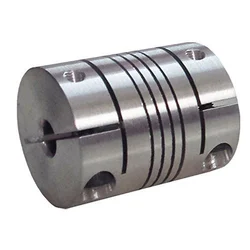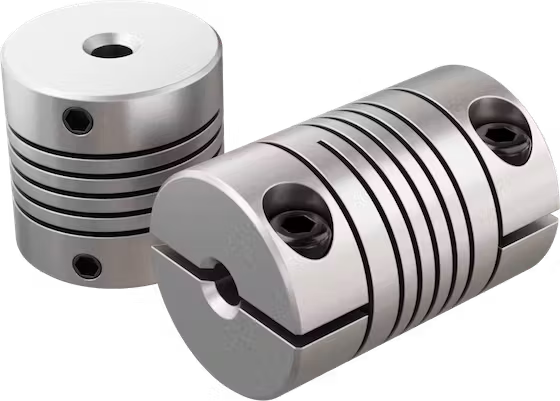Product Description
Male Thread With Helical Shank French Fire Hose Quick Coupling
The standard of Guillemin Coupling is EN14420-8 or NF E29572. Materials are mainly stainless steel, aluminum, polypropylene and brass. Guillemin hose couplings is connected with thread and locking ring (latch). It can be used with DIN2817 safety clamp. Working pressure is 10 bar. Guillemin coupling is widely used in industries of oil, chemical, fire protection, paper manufacture, construction and metallurgy.
Guillemin couplings, also referred to as French couplings are symmetrical couplings where to identical halves are assembled by joining the lugs and turning the locking ring to ensure a good connection.
Pros:
Simple and easy connection
Has a locking ring and soft seal
Large free flow area
Aluminum couplings are lighter in weight than stainless steel
Suitable for water, fluids, hydrocarbons, chemicals, and dry loose materials
| Product Name: | Guillemin Camlock Coupling |
| Sizes: | 1” – 4” (DN25-DN100) |
| MOQ: | 50 pcs |
| Certificates: | CE, ISO9001:2015 |
| Standard: | EN14420-8 /NF E29572 |
| Material: | Stainless steel 316/ 304, Aluminum, PP |
| Working pressure: | 10 bar |
| Feature: | Light, flexible and interchangeable. To connect and disconnect without a tool. Economical |
| Application: | it is widely used in oil, chemical industry, fire fighting, paper manufacture, constructoin and metallurgy |
| HS code: | 7609000000 |
Our Advantage
We are experienced as we have been in this industry as a manufacturer for more than 10 years. Both of quality and service are highly guaranteed. Absolutely prompt delivery. We can produce according to specific drawings from customers. Welcome OEM/ODM project. Strict control on quality. High efficient and well trained sale service team. ISO9001, CE and SGS certified.
FAQ
1.Q: Are you a producer or trading company?
A: We are an experienced manufacturer. We own production line and kinds of machines.
2.Q: Can you make our specific logo on the part?
A: Yes please provide me your logo and we will make your logo on the part.
3.Q: Can you manufacture products according to my drawings?
A: Yes we can manufacturer according to client’s drawings if drawings or samples are available. We are experienced enough to make new tools.
4. Q: Can I get some samples?
A: We are honored to offer you our samples. Normally it is for free like 3-5 pcs. It is charged if the samples are more than 5 pcs. Clients bear the freight cost.
5. Q: How many days do you need to finish an order?
A: Normally it takes about 30 days to finish the order. It takes more time around CHINAMFG season, or if the order involves many kinds of different products.
6. Q: What kind of rubber washer do you apply to camlock couplings?
A: Normally we use NBR gasket.
contact-info.html

Endurance of Helical Couplings for High Torque and Axial Motion
Helical couplings are designed to withstand a range of mechanical forces, including high levels of torque and axial motion:
- High Torque: Helical couplings are capable of transmitting high levels of torque due to their robust construction and the interlocking helical teeth. The helical design enhances the coupling’s ability to handle torque without compromising flexibility.
- Axial Motion: Helical couplings can accommodate limited axial motion without compromising their performance. This is especially beneficial in applications where shafts might experience slight axial displacement due to thermal expansion or other factors.
Engineers select helical couplings based on the anticipated torque requirements and axial motion characteristics of the application. It’s important to ensure that the selected coupling has the necessary torque rating and axial flexibility to meet the demands of the specific machinery or system.

Correct Installation and Maintenance of Helical Couplings in Machinery
Proper installation and maintenance are essential for the optimal performance and longevity of helical couplings:
Installation:
- Alignment: Ensure that the shafts to be connected are properly aligned within the specified tolerances. Misalignment can lead to premature wear and reduced coupling life.
- Coupling Insertion: Gently slide the coupling onto the shafts, ensuring that it is fully seated. Avoid forcing the coupling onto the shafts to prevent damage.
- Tightening: Follow the manufacturer’s guidelines for tightening the coupling fasteners. Use the recommended torque values to prevent overtightening or undertightening.
- Lubrication: Apply the appropriate lubricant to any contacting surfaces of the coupling, following the manufacturer’s recommendations.
- Secure Fasteners: Double-check that all fasteners are properly secured. Ensure that any set screws or locking mechanisms are correctly positioned and tightened.
Maintenance:
- Regular Inspection: Periodically inspect the coupling for signs of wear, damage, or misalignment. Address any issues promptly to prevent further problems.
- Lubrication: Maintain proper lubrication as recommended by the manufacturer. Lubrication helps reduce friction, wear, and heat buildup.
- Environmental Conditions: Consider the operating environment of the coupling. If the machinery is exposed to harsh conditions, take measures to protect the coupling from contaminants and corrosive substances.
- Load Changes: If the operating conditions change, such as increased loads or speeds, reevaluate the coupling’s suitability for the application and adjust maintenance intervals accordingly.
- Replacement: Over time, couplings may wear out due to normal usage. If wear is significant or if the coupling shows signs of failure, replace it with a new one to ensure safe and reliable operation.
By following proper installation and maintenance practices, you can maximize the performance and lifespan of helical couplings in your machinery systems.

Diagnosing and Addressing Issues with Helical Couplings in Machinery Systems
Diagnosing and addressing issues related to helical couplings in machinery systems require a systematic approach:
- Visual Inspection: Regularly inspect the coupling for signs of wear, misalignment, or damage, such as cracks, corrosion, or deformation.
- Noise and Vibration: Unusual noise or increased vibration can indicate coupling problems. Use vibration analysis tools to identify issues and their severity.
- Power Transmission Issues: If you notice a decrease in power transmission efficiency or sudden changes in torque, it may be due to coupling problems.
- Temperature Changes: Abnormal temperature increases in the coupling area could indicate friction or misalignment issues.
- Lubrication: Check the lubrication of the coupling regularly. Insufficient or contaminated lubricant can lead to increased wear and poor performance.
- Alignment: Ensure that the coupling is properly aligned. Misalignment can cause premature wear and reduce the coupling’s lifespan.
- Fasteners: Examine fasteners like set screws or clamping elements. Loose or damaged fasteners can affect coupling performance.
- Replace Damaged Parts: If you identify worn or damaged parts, replace them promptly with genuine replacement components.
- Balancing: Imbalance can lead to vibration and wear. Balance the coupling if necessary.
- Proper Installation: If the coupling was recently installed, ensure it was installed correctly and according to the manufacturer’s guidelines.
- Consult Experts: If you’re unsure about diagnosing or addressing issues, consult with experts or engineers who specialize in coupling systems.
By conducting regular inspections, monitoring performance, and addressing issues promptly, you can maintain the optimal functioning of helical couplings in your machinery systems.


editor by CX 2023-12-07